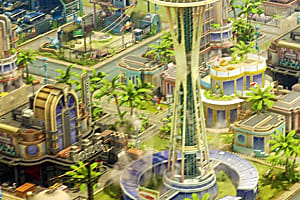Mahar regiment book records many groups in 1818 battle
TNN | Updated: Jan 4, 2018, 01:06 IST
Pune: Mahar soldiers, along with Maratha, Rajput, Muslim and Indian Jews were part of the British troops that fought against the Peshwa Bajirao II's army in the Koregaon Bhima battle on January 1, 1818, according to the book "Forefront Forever".
The book documents contributions of the Mahars in battles since the 17th century and was released by Mahar Regimental Centre of Indian Army in 1981.
In the chapter called "The Brave Mahars" author Col V Longer writes on pages 13 and 14, "12 men of Madras Artillery and 50 men of 2nd battalion of 1st Regiment Bombay Native Infantry as also three British officers were killed in action. 113 men and two British officers were wounded. Of the men, who fell in action, 22 were Mahars or Parwaris (names ending with "nak") 16 were Marathas, 8 were Rajputs, two were Muslims, and one or two were probably Indian Jews."
This valorous action and fortitude won renown for the Mahar soldiers, the author said, adding, "It is hard to say who has the greater glory, the Indian soldiers themselves or the British officers, who had been able to ensure and command such faith and such staunch and amazing loyalty (many soldiers were Mahars)."
While describing the actual battle, the author writes, " A small force of 500 men of the 2nd battalion of 1st RBNI together with 250 men of the Poona Irregular Horse (PIH) and two six-pounder guns with 24 European gunners of the Madras Artillery, under the Command of Captain FF Staunton, fought without rest or respite, food or water, continuously for twelve hours against a large force of 20,000 horse and 8,000 infantry of Peshwa Bajirao II who was threatening the British garrisons at Kirkee and Poona."
"Capt Staunton's detachment had been rushed from Sirur (present day Shirur) on the evening of December 31 to help the Poona garrison. Marching throughout the night, covering a distance of about 27 miles, the detachment had arrived at Koregaon on morning of January 1, 1818 to witness a frightening array of the famous Maratha horse. Capt Staunton had hardly prepared his defences when three detachments of the Peshwa's Infantry, each about 600 strong, had advanced simultaneously from three directions. They were supported by two guns and the advance was covered by a continuous barrage of rockets," the author adds.
In spite of the gallant efforts of PIH, the author said, the entire British force at Koregaon was encircled by the Maratha cavalry and infantry and all access to the river was cut off.
"The assaulting parties came in force and pushed their way into the heart of the village seizing some strong and commanding positions from which it was impossible to dislodge them. There was severe hand-to-hand fighting for each house, hut and street and the Indian sepoys, many Mahars, held on doggedly, fighting tenaciously with magnificent courage. The Mahars showed tremendous intrepidity and continued to battle with the utmost bravery against hopeless odds," the author said.
The book was gifted to Sudhakar Khambe, whose grandfather and father served in the Mahar regiment. Khambe, who runs museum on Mahar regiment, told TOI, "The book has described Mahar history in great detail. It is a reference for scholars and researchers."
The book documents contributions of the Mahars in battles since the 17th century and was released by Mahar Regimental Centre of Indian Army in 1981.
In the chapter called "The Brave Mahars" author Col V Longer writes on pages 13 and 14, "12 men of Madras Artillery and 50 men of 2nd battalion of 1st Regiment Bombay Native Infantry as also three British officers were killed in action. 113 men and two British officers were wounded. Of the men, who fell in action, 22 were Mahars or Parwaris (names ending with "nak") 16 were Marathas, 8 were Rajputs, two were Muslims, and one or two were probably Indian Jews."
This valorous action and fortitude won renown for the Mahar soldiers, the author said, adding, "It is hard to say who has the greater glory, the Indian soldiers themselves or the British officers, who had been able to ensure and command such faith and such staunch and amazing loyalty (many soldiers were Mahars)."
While describing the actual battle, the author writes, " A small force of 500 men of the 2nd battalion of 1st RBNI together with 250 men of the Poona Irregular Horse (PIH) and two six-pounder guns with 24 European gunners of the Madras Artillery, under the Command of Captain FF Staunton, fought without rest or respite, food or water, continuously for twelve hours against a large force of 20,000 horse and 8,000 infantry of Peshwa Bajirao II who was threatening the British garrisons at Kirkee and Poona."
"Capt Staunton's detachment had been rushed from Sirur (present day Shirur) on the evening of December 31 to help the Poona garrison. Marching throughout the night, covering a distance of about 27 miles, the detachment had arrived at Koregaon on morning of January 1, 1818 to witness a frightening array of the famous Maratha horse. Capt Staunton had hardly prepared his defences when three detachments of the Peshwa's Infantry, each about 600 strong, had advanced simultaneously from three directions. They were supported by two guns and the advance was covered by a continuous barrage of rockets," the author adds.
In spite of the gallant efforts of PIH, the author said, the entire British force at Koregaon was encircled by the Maratha cavalry and infantry and all access to the river was cut off.
"The assaulting parties came in force and pushed their way into the heart of the village seizing some strong and commanding positions from which it was impossible to dislodge them. There was severe hand-to-hand fighting for each house, hut and street and the Indian sepoys, many Mahars, held on doggedly, fighting tenaciously with magnificent courage. The Mahars showed tremendous intrepidity and continued to battle with the utmost bravery against hopeless odds," the author said.
The book was gifted to Sudhakar Khambe, whose grandfather and father served in the Mahar regiment. Khambe, who runs museum on Mahar regiment, told TOI, "The book has described Mahar history in great detail. It is a reference for scholars and researchers."
Get latest news & live updates on the go on your pc with News App. Download The Times of India news app for your device.
From around the web
More from The Times of India
From the Web
More From The Times of India

We Tried HelloFresh: Here's What Happened
Popdust for HelloFresh
This Tiny Device Will Power Everything by 2020
Banyan Hill Publishing
This App Applies Every Coupon on the Internet to Your Cart
Honey
The 2018 SUV Class Might Just Blow Your Mind
SUV | Sponsored Links
The Must-Play City Building Game of the Year
Forge Of Empires - Free Online Game










































All Comments ()+^ Back to Top
Refrain from posting comments that are obscene, defamatory or inflammatory, and do not indulge in personal attacks, name calling or inciting hatred against any community. Help us delete comments that do not follow these guidelines by marking them offensive. Let's work together to keep the conversation civil.
HIDE